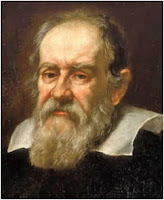Albert Einstein was very poor in his studies .He only fancied physics and always kept thinking about some or the other concept. He was a clerk in the patent office and always kept scribbling something on papers that he kept hidden in his drawers. In 1905 he wrote a series of papers that changed the view of the universe forever. One day, in the past few months a great deal of what he’d been thinking about had started coming together, but there was still something he felt he was near to understanding but couldn’t quite see. One fine morning he suddenly woke up with “the great excitement”.
E=MC2 had arrived in the world.



